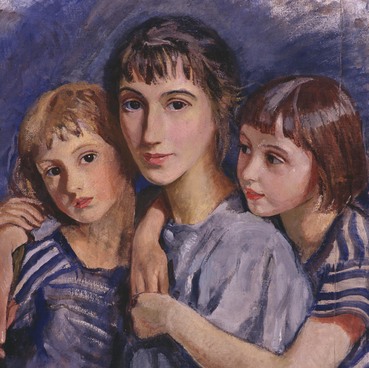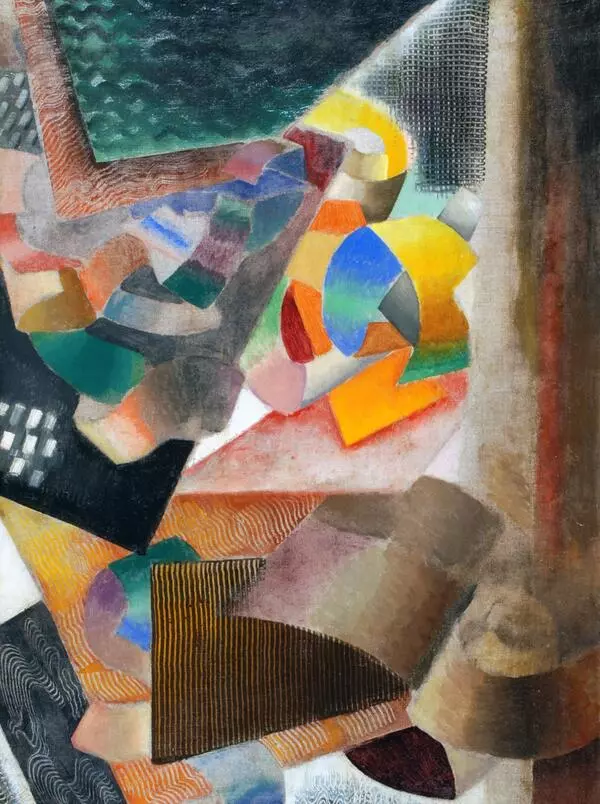Painter and sculptor Vladimir Baranov-Rossine was born in 1888 in Bolshaya Lepetikha, a village in what now is the territory of contemporary Ukraine. In the early 20th century, he attended the Art School in Odessa, and as soon as in 1907, he put up his first paintings for display at the first exhibitions of Russian vanguard art alongside such painters as Mikhail Larionov, Natalia Goncharova, and David Burlyuk. He worked and lived in Paris since 1910 to later return to the Soviet Union for some time. Yet, in 1925, despite the recognition and a brilliant career as a teacher, he moved to the capital of France for good.
In his art, Baranov-Rossine exploited many artistic styles, from impressionism to cubism and suprematism. In 1910, he focused on probing into ways to show dynamic motion and music rhythms through the laws of permeation and juxtaposition of spectral colors. In the early 1920s, he was into Alexander Skryabin’s concept of color music (son et lumiere). Skryabin believed that every sound has a color, and left behind a great many near-mystical theories on color music.
Baranov-Rossine embodied some of those concepts and styles in his “Steamboats” landscape of 1920. It shows a river as if seen from the riverbank: in the center of it, at the backdrop of pyramid-shaped clouds there are three moderately-sized anchored steamboats and there is their reflection in the water. The boats are warm red and black, which combination is sharply in contrast to the adjacent palette. This contraposition creates an alarming and tense feeling. The alternation of the vertical boat stacks and masts and the horizontal shipboards, the docks, and the portside gives the painting a clearly visible and almost musical rhythm.
While in emigration, Baranov-Rossine continued experimenting with sound and color which then had long expended outside the premises of painting. In Paris, he got the second patent for his own invention, the optophonic piano, or the optophone, a synaesthetic instrument that was capable of creating sounds and colored lights. At that time, the artist was intensely focused on audiovisual research and came up with a proprietary teaching methodology which could presumably teach the so-called “color hearing”, the ability to see the color of music. In 1939, his unusual theoretical interests brought him a patent in the “chameleon method” which later offered itself as a solid foundation for the design of spotted military camouflage.
In his art, Baranov-Rossine exploited many artistic styles, from impressionism to cubism and suprematism. In 1910, he focused on probing into ways to show dynamic motion and music rhythms through the laws of permeation and juxtaposition of spectral colors. In the early 1920s, he was into Alexander Skryabin’s concept of color music (son et lumiere). Skryabin believed that every sound has a color, and left behind a great many near-mystical theories on color music.
Baranov-Rossine embodied some of those concepts and styles in his “Steamboats” landscape of 1920. It shows a river as if seen from the riverbank: in the center of it, at the backdrop of pyramid-shaped clouds there are three moderately-sized anchored steamboats and there is their reflection in the water. The boats are warm red and black, which combination is sharply in contrast to the adjacent palette. This contraposition creates an alarming and tense feeling. The alternation of the vertical boat stacks and masts and the horizontal shipboards, the docks, and the portside gives the painting a clearly visible and almost musical rhythm.
While in emigration, Baranov-Rossine continued experimenting with sound and color which then had long expended outside the premises of painting. In Paris, he got the second patent for his own invention, the optophonic piano, or the optophone, a synaesthetic instrument that was capable of creating sounds and colored lights. At that time, the artist was intensely focused on audiovisual research and came up with a proprietary teaching methodology which could presumably teach the so-called “color hearing”, the ability to see the color of music. In 1939, his unusual theoretical interests brought him a patent in the “chameleon method” which later offered itself as a solid foundation for the design of spotted military camouflage.

